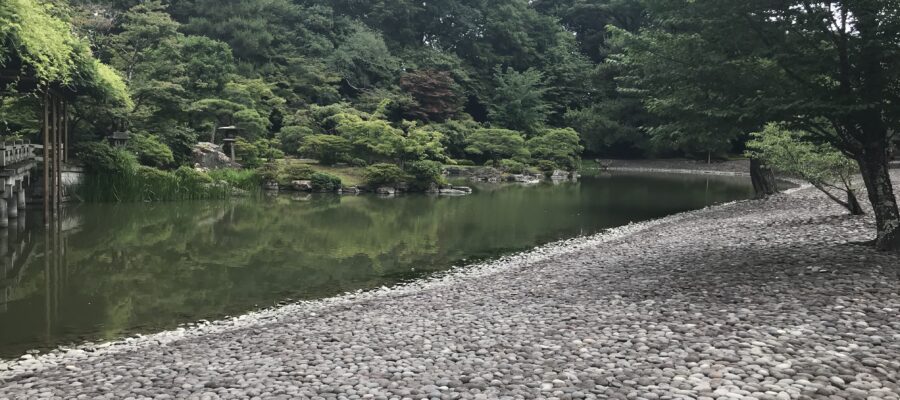紅葉橋を渡って南池へ
北池と南池の境界となる紅葉橋を渡ります。橋のすぐそばには、青紅葉の葉が橋にかぶさるように茂っています。北池が鬱蒼とした緑の世界であれば、南池は視界が開けた明るい世界の印象です。池の水辺には十分な広さの州浜があるため、そのように見えるのかも知れません。紅葉橋の上からは南池に浮かぶ島にかかる八ツ橋が見えています。
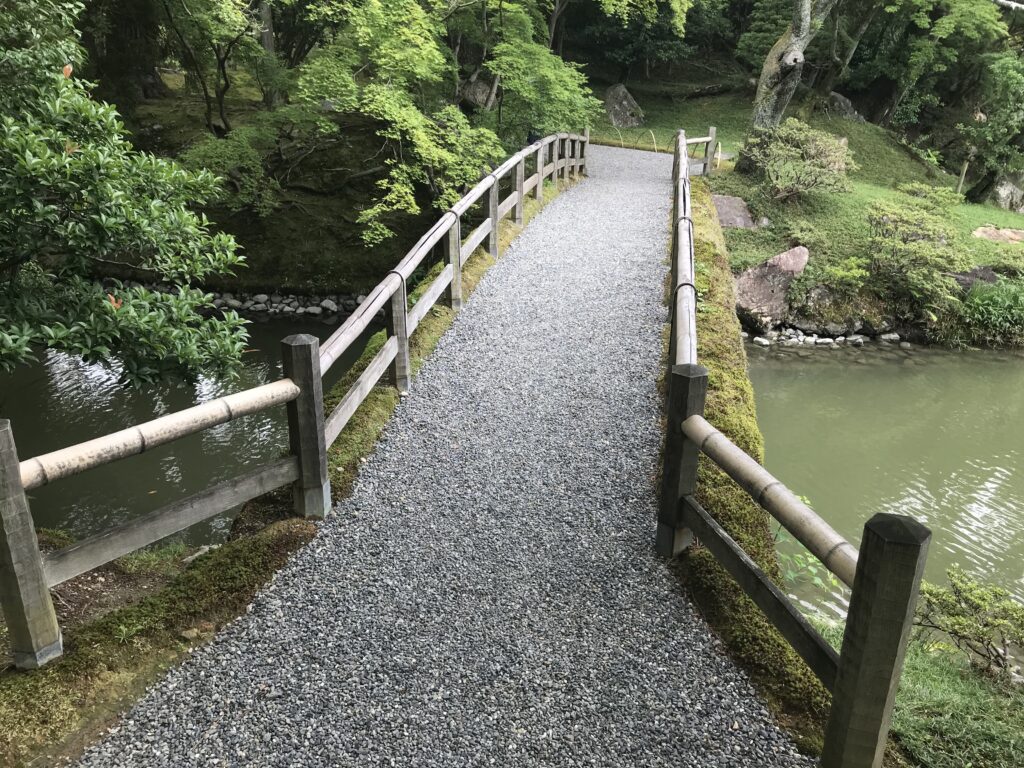
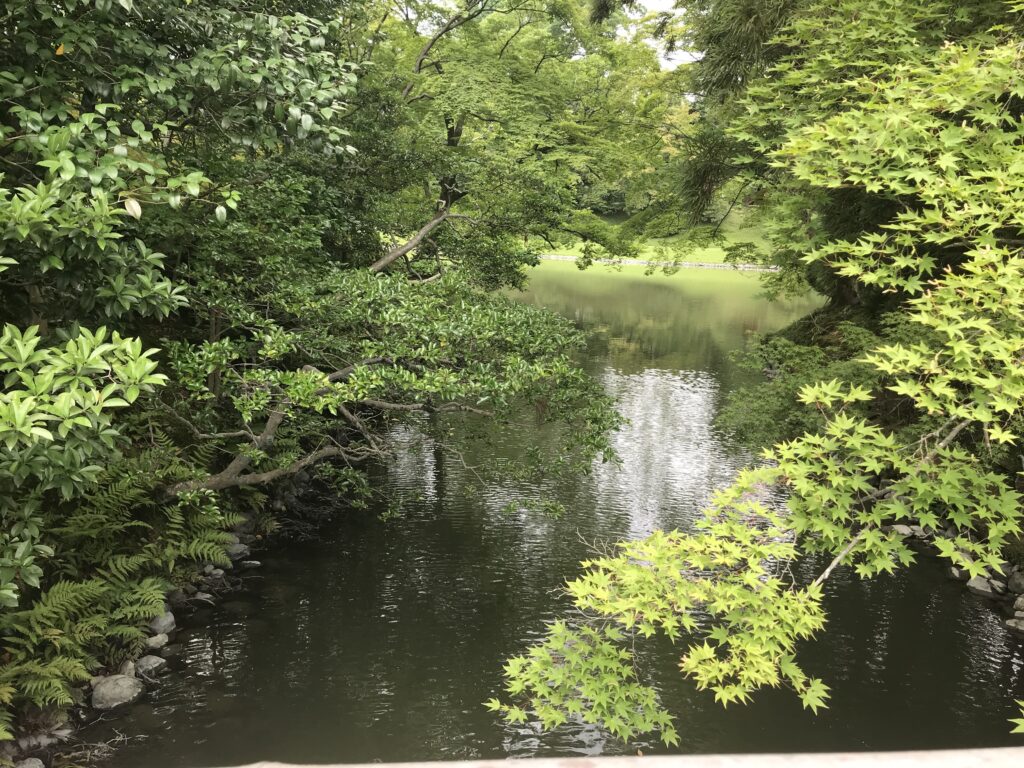
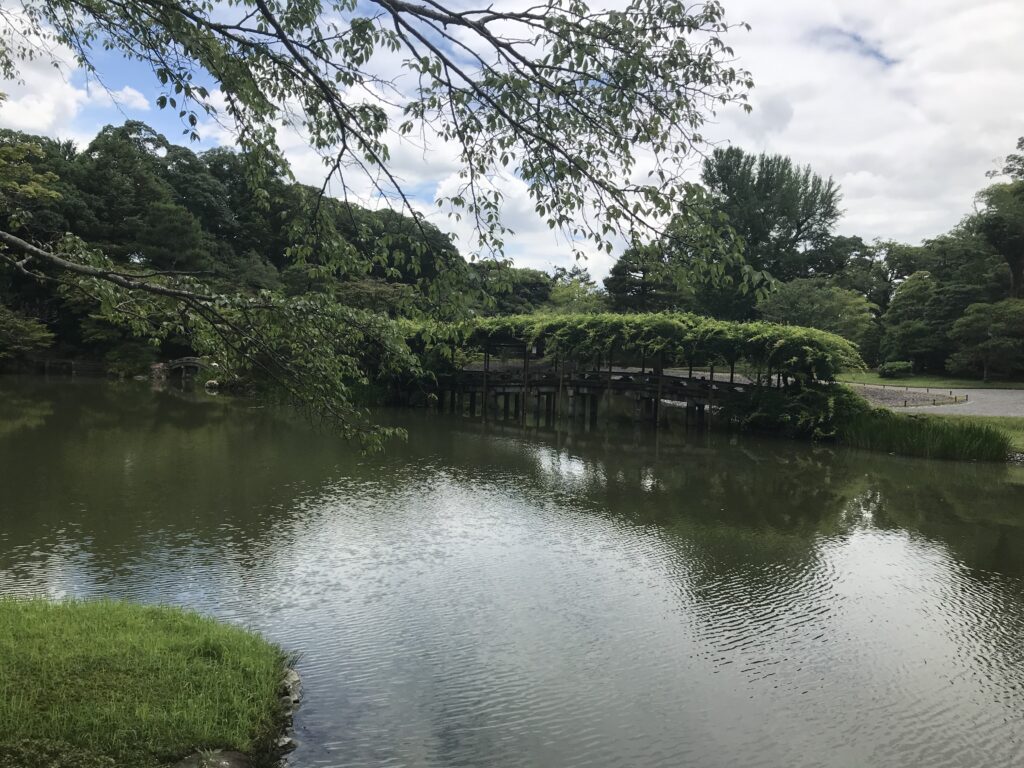
藤棚のある八ツ橋
ガイドさんに従って八ツ橋まで歩いてきました。この橋の上には、藤棚がつくってあり、季節によっては美しい藤の花を楽しみながら橋を渡ることができます。八ツ橋の上から、先ほど歩いてきた紅葉橋の方を見ると、橋の右側に石組で作られた滝が見え、実際に水も流れています。
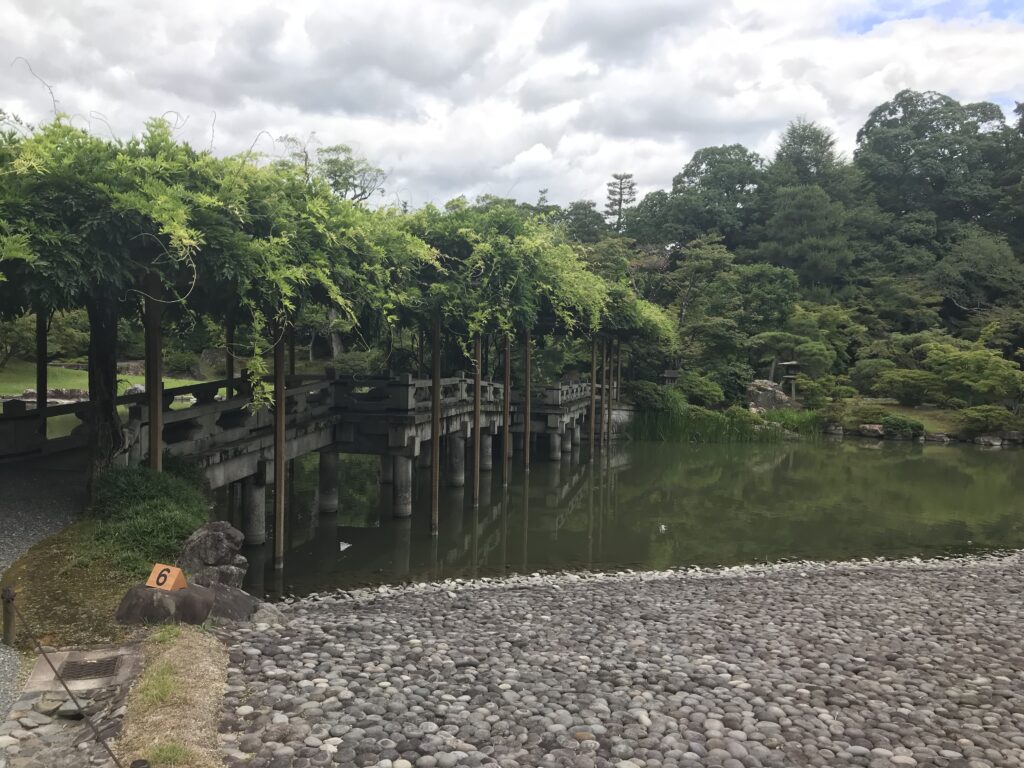
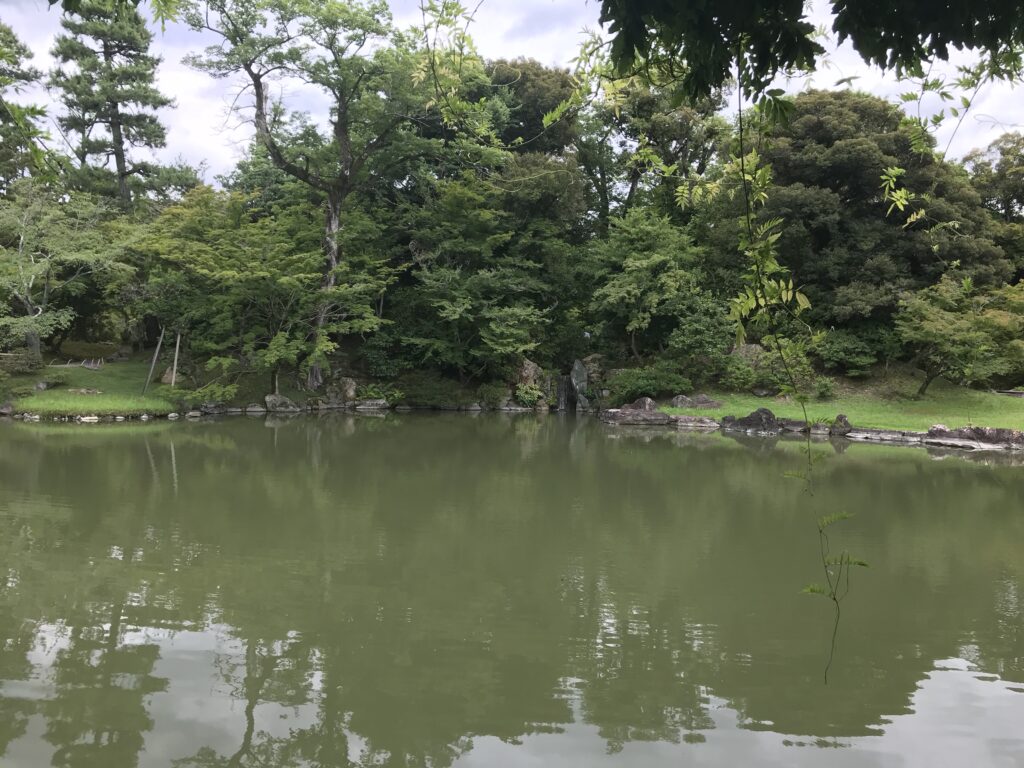
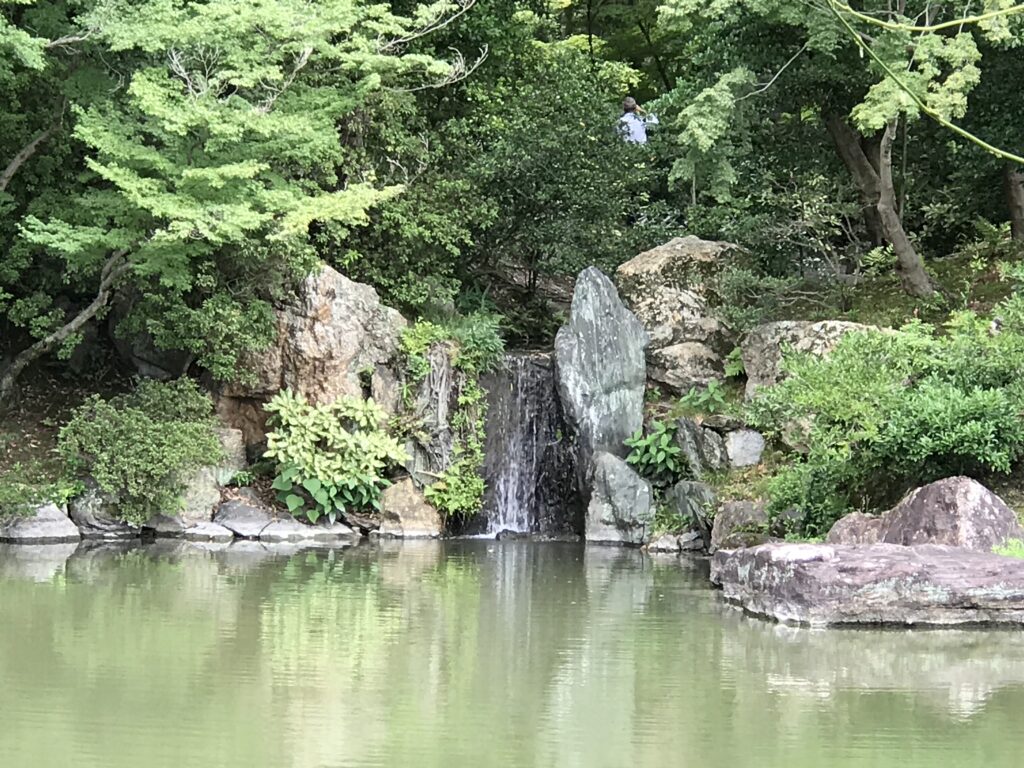
一升石の州浜
南池の州浜には楕円形のやや平たい大きさの揃った石が敷き詰めてあります。総数は約12万個で池の中にまで敷いているそうです。この石は一升石とも呼ばれています。伝承によると、石一個に対して、米一升と交換するという約束で石を集めたとそうです。池の水辺全体を覆っている光景は壮観です。
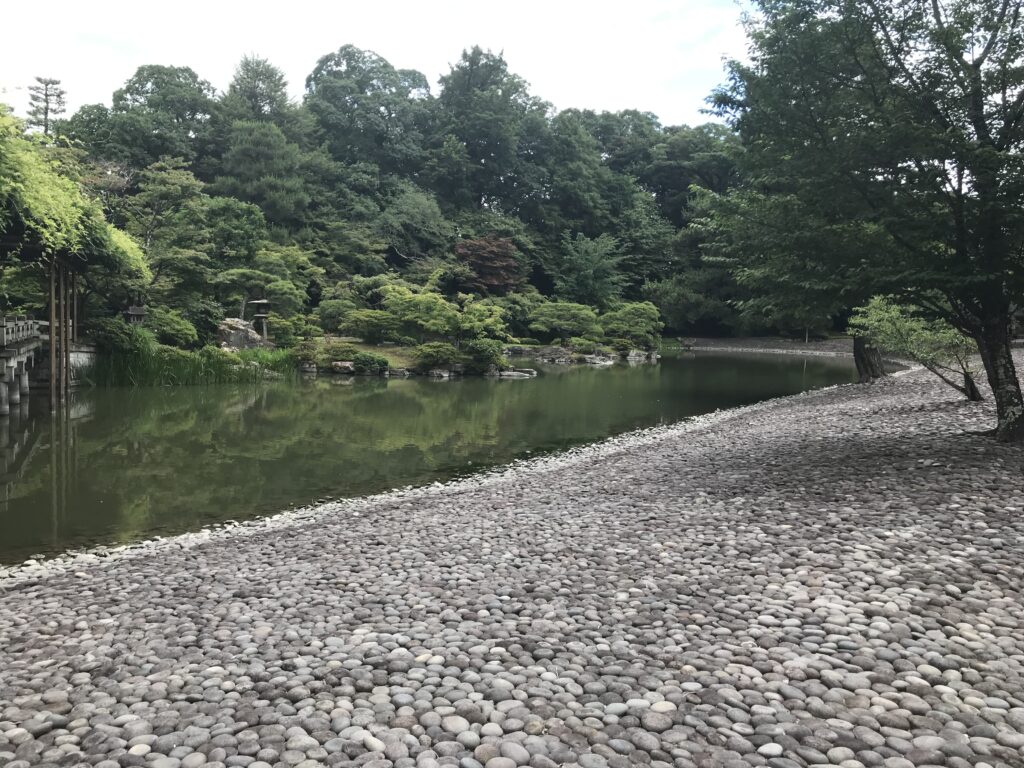
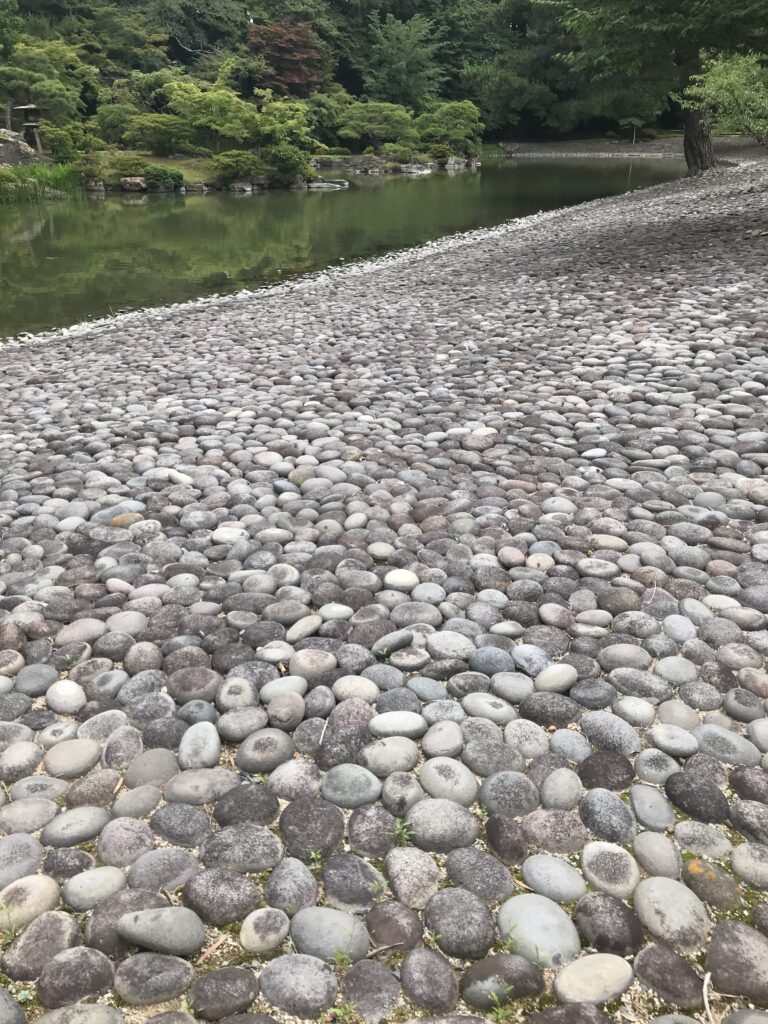
南池の回遊を続けていると、いくつもの灯篭に出会います。面白かったのは、グネグネと曲がりながら伸びる松の木が、灯篭の笠に支えてもらっている様子です。松が倒れそうだから灯篭を下に置いたのか、灯篭があるから、こりゃ楽だと松が思って、こんな生育をしたのか興味深い謎です。
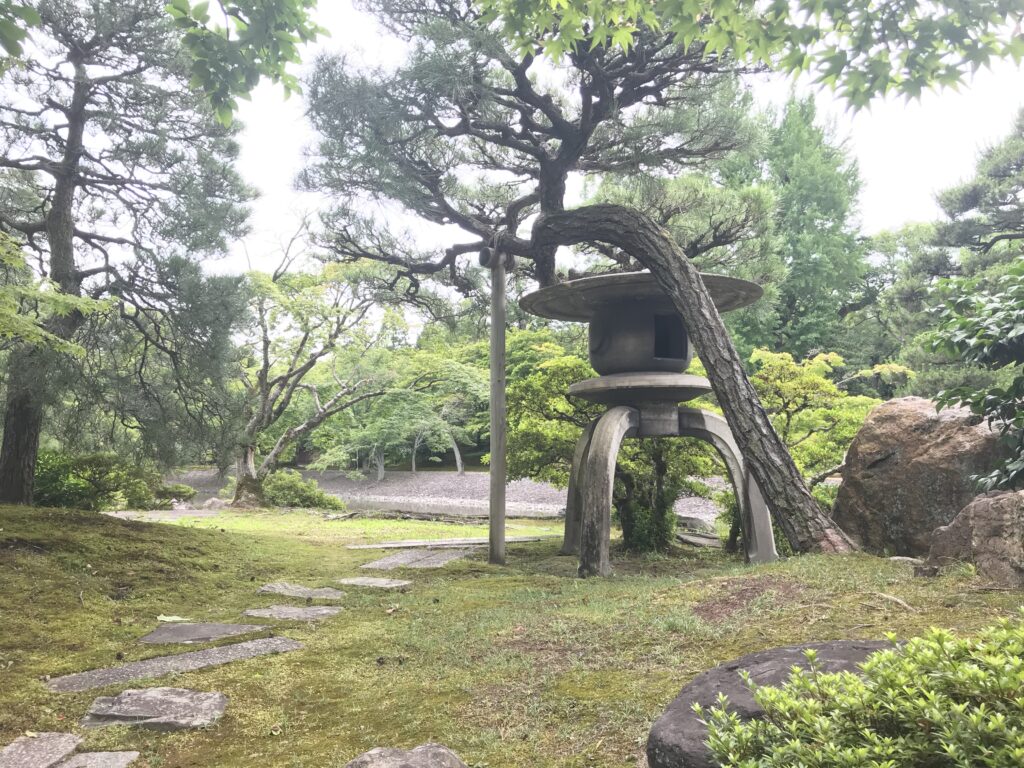
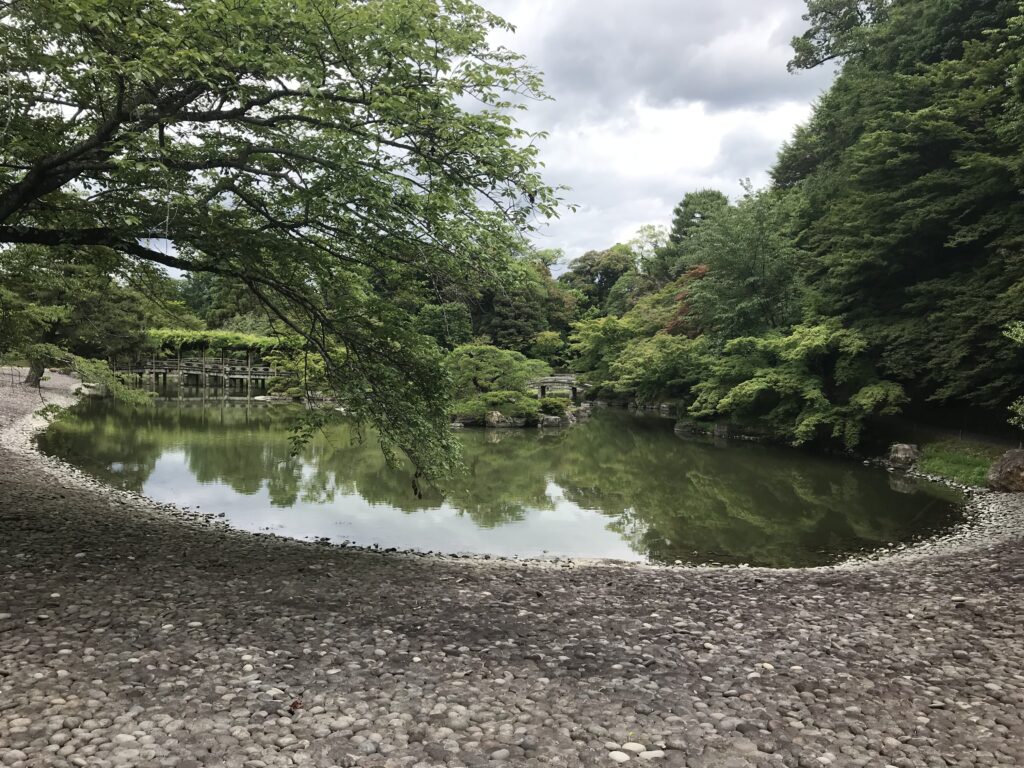
都会のオアシス
南池の南端まで来ました。南池を一望する場所に醒花亭という茶室が建っています。中には入れないのですが、洗練された雰囲気が伝わってくる建物です。色合いも周りの景色にマッチしています。日本の庭園に関心を持つまで、その存在を知らなかった仙洞御所ですが、初夏の熱い日でしたので、都会のオアシスを存分に楽しむことができました。(つづく)
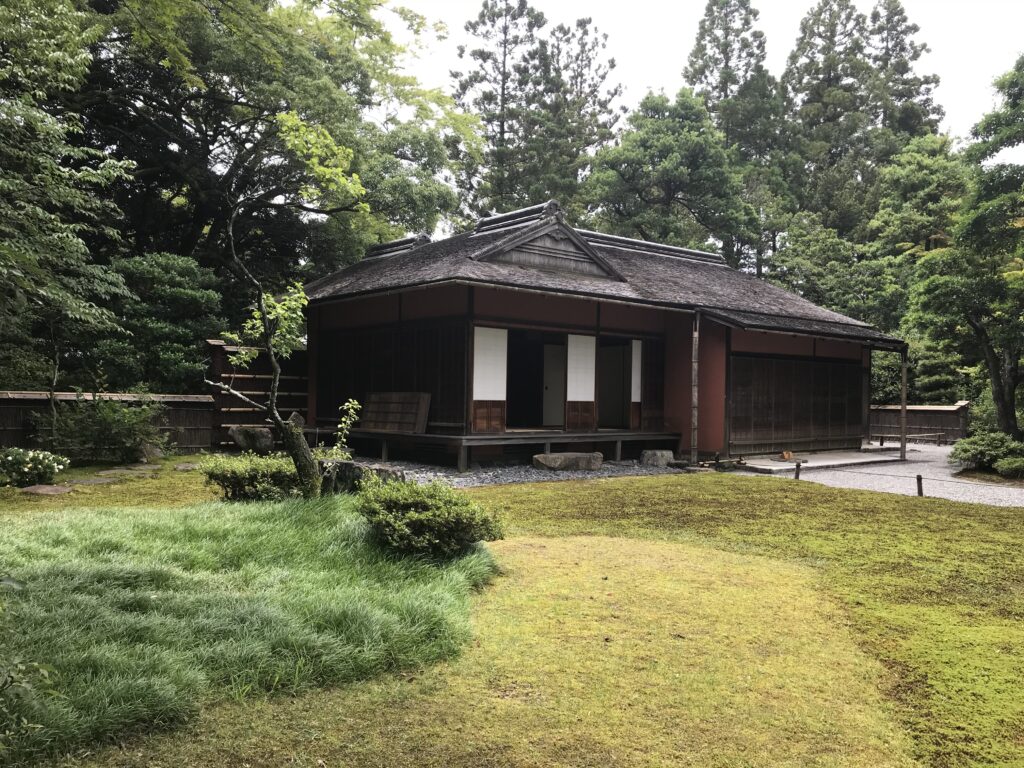
仙洞御所が紹介されている書籍
烏賀陽百合さんの「一度は行ってみたい京都『絶景庭園』」に仙洞御所が解説されています。
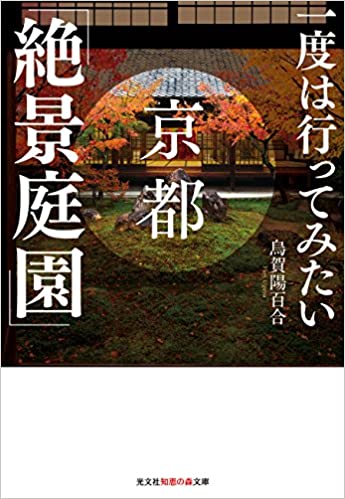
一度は行ってみたい京都「絶景庭園」 (光文社知恵の森文庫) [ 烏賀陽百合 ]
価格:924円
(2021/5/24 12:56時点)
感想(2件)
Sento Gosho (Imperial Palace) (2) South Pond (English)
Crossing the red leaf bridge to the South Pond
I crossed the Momiji Bridge, which serves as the boundary between the North and South Ponds. Right next to the bridge, there was a thick layer of green foliage that seemed to cover the bridge. If the North Pond was a world of dense greenery, the South Pond was a bright world with an open view. This might be because the pond had a wide enough shoreline to make it look that way. From the top of the red-leaf bridge, I could see the staggered bridges over the islands in the South Pond.
Yatsuhashi (staggered) bridge with wisteria trellis
I followed the guide and walked to the Yatsuhashi bridge. There was a wisteria trellis on the bridge, and depending on the season, the visitors can enjoy the beautiful wisteria while crossing the bridge. Looking at the Momiji Bridge from the top of the bridge, I could see a waterfall made of stones on the right side of the bridge, and water was actually flowing.
The State Beach of One Shou (Japanese unit of volume) Stone
The state beach of the south pond was paved with oval, slightly flat, uniformly sized stones. The total number of stones was about 120,000, and they were paved all the way into the pond. These stones were also called “isshouseki” (One Shou Stone). According to tradition, the stones were collected on the promise that one stone would be exchanged for one shou (Japanese unit of volume) of rice. Covering the entire waterfront of the pond was a spectacular sight.
As I continued my walk around the South Pond, I came across a number of lanterns. What was interesting to me was the way the pine tree, growing in a crooked manner, was being supported by the shade of the lantern. It was an interesting mystery whether they put the lanterns under the pine tree because they were afraid the pine tree would fall over, or whether the lanterns made it easier for the pine trees to grow like this.
An Oasis in Kyoto City
I came to the south end of South Pond. There was a teahouse called Seika-tei overlooking the South Pond. I couldn’t go inside, but I could feel the sophisticated atmosphere of the building. The colors also matched the surrounding scenery. I had never heard of the Sento Palace before I became interested in Japanese gardens, but as it was a hot day in early summer, I was able to fully enjoy this urban oasis. (To be continued)
Sento Gosho (Palais impérial) (2) Étang du Sud (Français)
Traverser le pont à feuilles rouges vers l’étang sud
J’ai traversé le pont Momiji, qui sert de limite entre les étangs Nord et Sud. Juste à côté du pont, il y avait une épaisse couche de feuillage vert qui semblait recouvrir le pont. Si l’étang du Nord était un monde de verdure dense, l’étang du Sud était un monde lumineux avec une vue ouverte. Cela pourrait être dû au fait que l’étang avait un rivage assez large pour qu’il en ait l’air. Du haut du pont de feuilles rouges, je pouvais voir les ponts échelonnés sur les îles de l’étang Sud.
Pont Yatsuhashi (en quinconce) avec treillis de glycines
J’ai suivi le guide et j’ai marché jusqu’au pont Yatsuhashi. Il y avait un treillis de glycines sur le pont, et selon la saison, les visiteurs pouvaient profiter des belles glycines en traversant le pont. En regardant le pont Momiji du haut du pont, j’ai pu voir une chute d’eau faite de pierres sur le côté droit du pont, et l’eau coulait réellement.
La plage d’État d’un shou (unité de volume japonaise) Pierre
La plage publique de l’étang sud était pavée de pierres ovales, légèrement plates et de taille uniforme. Le nombre total de pierres était d’environ 120 000, et elles étaient pavées jusqu’à l’étang. Ces pierres étaient également appelées “isshouseki” (One Shou Stone). Selon la tradition, les pierres étaient collectées sur la promesse qu’une pierre serait échangée contre un shou (unité de volume japonaise) de riz. Couvrir l’ensemble du front de mer de l’étang était une vue spectaculaire.
En poursuivant ma promenade autour de l’étang sud, j’ai rencontré un certain nombre de lanternes. Ce qui était intéressant pour moi, c’était la façon dont le pin, qui poussait de façon tordue, était soutenu par l’ombre de la lanterne. C’était un mystère intéressant de savoir s’ils mettaient les lanternes sous le pin parce qu’ils avaient peur que le pin tombe, ou si les lanternes facilitaient la croissance des pins de cette façon.
Une oasis dans la ville de Kyoto
Je suis arrivé à l’extrémité sud de South Pond. Il y avait un salon de thé appelé Seika-tei qui surplombait l’étang Sud. Je ne pouvais pas entrer à l’intérieur, mais je pouvais sentir l’atmosphère sophistiquée du bâtiment. Les couleurs étaient également assorties au paysage environnant. Je n’avais jamais entendu parler du Sento Palace avant de m’intéresser aux jardins japonais, mais comme c’était une journée chaude du début de l’été, j’ai pu profiter pleinement de cette oasis urbaine. (A suivre)
